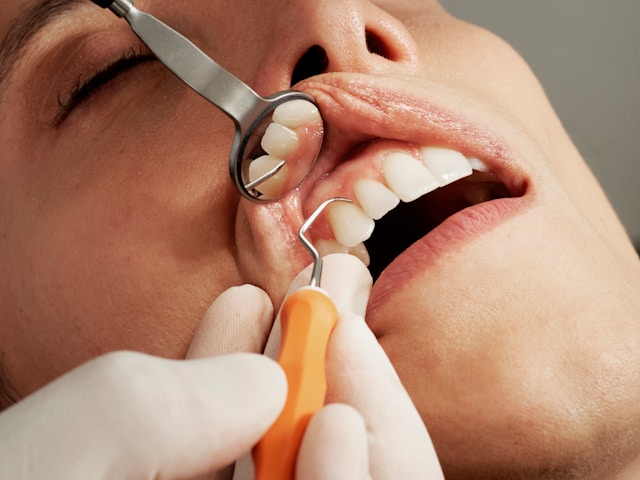Dental Cement: The Unsung Hero of Successful Dental Restorations

Dental procedures have evolved significantly over the years, with advancements in technology and materials enhancing patient outcomes and comfort. One such advancement is using high-quality dental cement, which is crucial in various dental procedures. This blog post will explore how this cement enhances dental procedures, from crowns and bridges to veneers and implants.
Know the Basics
Cement is a dental material used in various procedures to bond appliances and restorations to the teeth. It is a critical component in dentistry, serving multiple purposes, such as adhesive bonding, cavity lining, and temporary restoration. Cements are composed of different materials, including resin, glass ionomer, and zinc oxide-eugenol, each offering unique benefits and suited for specific applications.
Advantages of High-Quality Cement
Enhanced Bonding and Durability
It provides superior bonding strength, ensuring dental appliances and restorations such as crowns, bridges, and veneers stay securely in place. This enhanced bonding capability improves the durability and longevity of dental restorations and contributes to better oral health by preventing decay and infection.
Improved Aesthetics
These modern adhesives are designed to be aesthetically pleasing, with colors matching the teeth’ natural shade. This is particularly important for procedures involving visible parts of the teeth, such as veneers and crowns on the front teeth. It ensures that the restorations attain a natural look and seamlessly integrate with neighbouring teeth to enhance the overall aesthetic beauty of the patient’s smile.
Reduced Sensitivity and Discomfort
The formulation of this adhesive is designed to minimize post-procedure sensitivity and discomfort. By providing a robust and durable bond and preventing micro-leakage, these cement help protect the tooth’s nerve from stimuli that can cause pain, such as hot, cold, or pressure. Also, by minimizing the exposure of the dental pulp to external irritants, such as bacteria and thermal changes, this specialized cement contributes to a more comfortable experience for the patient both during and after the implant procedure. This results in a more comfortable experience for the patient during and after the procedure.
Versatility and Compatibility
These are versatile and compatible with various dental materials. Whether metal, porcelain, or composite restorations, these cement can effectively bond different types of materials to the tooth structure. This compatibility ensures that dentists can use the best materials for each patient’s needs, leading to better outcomes.
Applications in Dentistry
Crowns and Bridges
One of the most critical applications of this cement is the placement of crowns and bridges. These restorations are essential for restoring the function and appearance of damaged or missing teeth. The effectiveness of these procedures greatly depends on the robustness and dependability of the adhesive used to fix them. It provides exceptional adhesion, securing crowns and bridges firmly to either natural teeth or implants. This strong bond is crucial for withstanding the forces of biting and chewing, significantly extending the lifespan of these restorations.
Veneers
Veneers consist of slim, tailor-made coverings made from porcelain or composite materials intended to overlay the front side of teeth to enhance their visual appeal. The application of veneers requires precision, and the use of this cement not only offers strong adhesion but also matches the natural colour of the surrounding teeth. This aesthetic consideration is paramount, as veneers aim to seamlessly enhance the smile’s appearance.
It is used in veneer applications and is specifically formulated to be colour-stable, ensuring that the restoration remains undetectable over time and does not discolour or stain. Maintaining a natural and attractive smile, especially with veneers applied to the front teeth—the most noticeable when smiling or speaking—is essential for this aspect.
Implants
Implants are a favoured option for filling the gaps left by missing teeth. The crown or bridge connected to the implant is fastened in place with this cement. High-quality cement ensures a strong bond between the implant and the restoration, contributing to the overall success and longevity of the implant procedure. Beyond just filling the gaps, implants provide stability, functionality, and longevity comparable to natural teeth.
One crucial aspect of implant dentistry is the secure attachment of the crown or bridge to the implant fixture. Dental cement typically facilitates this attachment, which plays a pivotal role in ensuring a strong and durable bond between the implant and the restoration.
Orthodontics
In orthodontics, this cement is used to bond brackets to the teeth during braces placement. The cement quality directly affects the brackets’ stability and the effectiveness of the orthodontic treatment. This adhesive ensures that brackets remain securely attached to the teeth throughout the treatment, minimizing disruptions and the need for repairs.
Conclusion
High-quality dental cement is a cornerstone of modern dentistry, vitally enhancing the success and longevity of various procedures. Across different dental restorations, including crowns, bridges, veneers, and implants, the use of superior cement markedly enhances the results, comfort, and satisfaction experienced by patients. As dental materials evolve, the importance of high-quality cement in achieving optimal oral health and aesthetics cannot be overstated.



